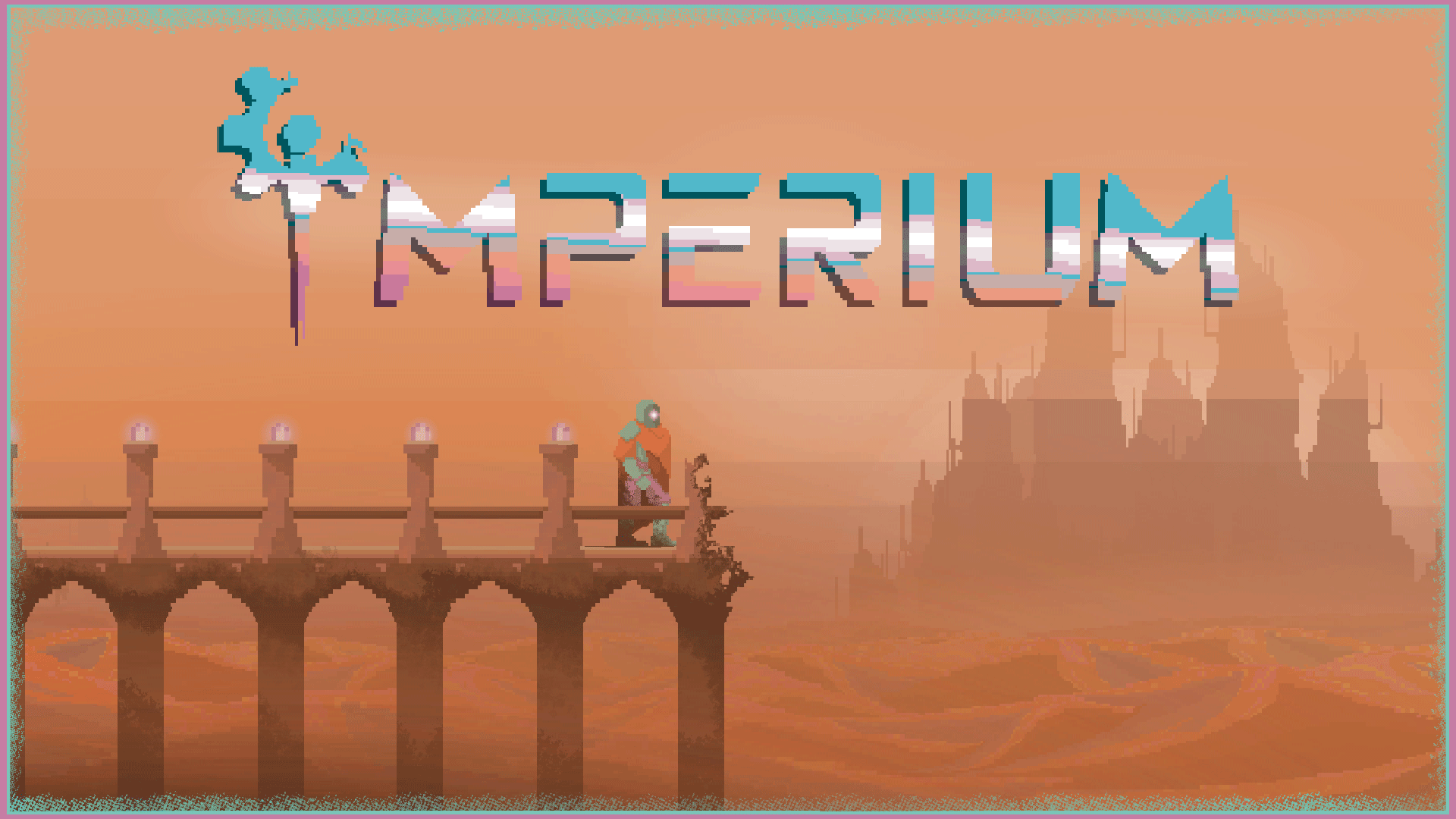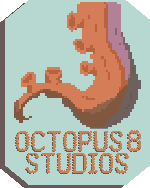The Making of Imperium - NDLSS Studios

Here at NDLSS Studios, we are a team made up of Game Design Students who aim to make narrative driven games paired with eye-catching visuals that will stick with you even after the credits have rolled. The five members of NDLSS have been tasked with making a concise but enjoyable gaming experience from conception to completion in just 60 days! Our journey began on 15th May 2023 and ended on 14th July 2023 when our game Imperium was finally released to the public, free for everyone to enjoy. Imperium will be our first collective venture into the realm of Game Design and Development and we can’t wait to share what we have made with you all.

So, what is Imperium?
“Imperium is a 2D Lo-fi, Sci-fi Puzzle Adventure game set in a dystopian future where you take on the role of BS-23, a former scientist of the condemned scientific organisation known as The Betterment. Imprisoned due to their involvement with the original Betterment, BS-23 is sent out onto dangerous missions alone and unarmed with the objective to obtain vital data at the behest of the Galactic Council Of Species. Aiding them in their fight back against a newer Betterment regime that threatens to put the entire galaxy in jeopardy, in return for a reduced prison sentence. However, BS-23 is not entirely alone. Each planet is also home to cybernetic hybrid versions of their home species, taken over by the new Betterment regime, of which BS-23 needs to find their way through, reach the end of each city and obtain the crucial data to save the galaxy. Using unique cybernetic units to complete complex puzzles across various beautiful landscapes!”
However, this was not the initial idea for the game we had planned to make over the next 9 weeks.
The Initial Vision
Some people may think 60 days seems like an incredibly long time to make a short gaming experience, and may think it would be easily manageable. Others will be on the other end of the scale; where it may seem extremely stressful and almost impossible. The reality is, with a great team you can find yourself situated comfortably somewhere in the middle. Knowing we only had 60 days to make a video game, we knew we couldn’t be too overly ambitious in terms of overall scale. With that in mind, our initial idea was to create a simple 2D Rouge-lite Action Platformer, with fast-paced movement and shooting mechanics. After a discussion with those organising the challenge, they made the suggestion that we turn our initial idea into a puzzle platformer instead. Not ones to shy away from a challenge, we changed our games genre from Rogue-lite Action to Puzzle. There was just one problem.
Feeling Puzzled
After agreeing to the change, the team got together to discuss our next move and we quickly realised that nobody within our team had much experience in creating puzzle games, or had played enough to be able to confidently know the dos and don’ts of the genre. This meant that we had to do a good amount of research in an effort to make sure we all had a better understanding and grasp of what goes into making a good puzzle game. That said, due to our team's personal backgrounds and interests, we decided to put our own spin on how these puzzles would be solved.
This also meant that our Lead Designer (puzzle designer) had a tricky task on their hands, having to design interesting but complex enough puzzles to make the players think with little prior experience in said genre of games. Through research, trial and error and after multiple re-drafts and testing from other members of the team, over 20 individual puzzles were created and playable, 19 of which will be making it into the games final release, ready to tease players' brains.
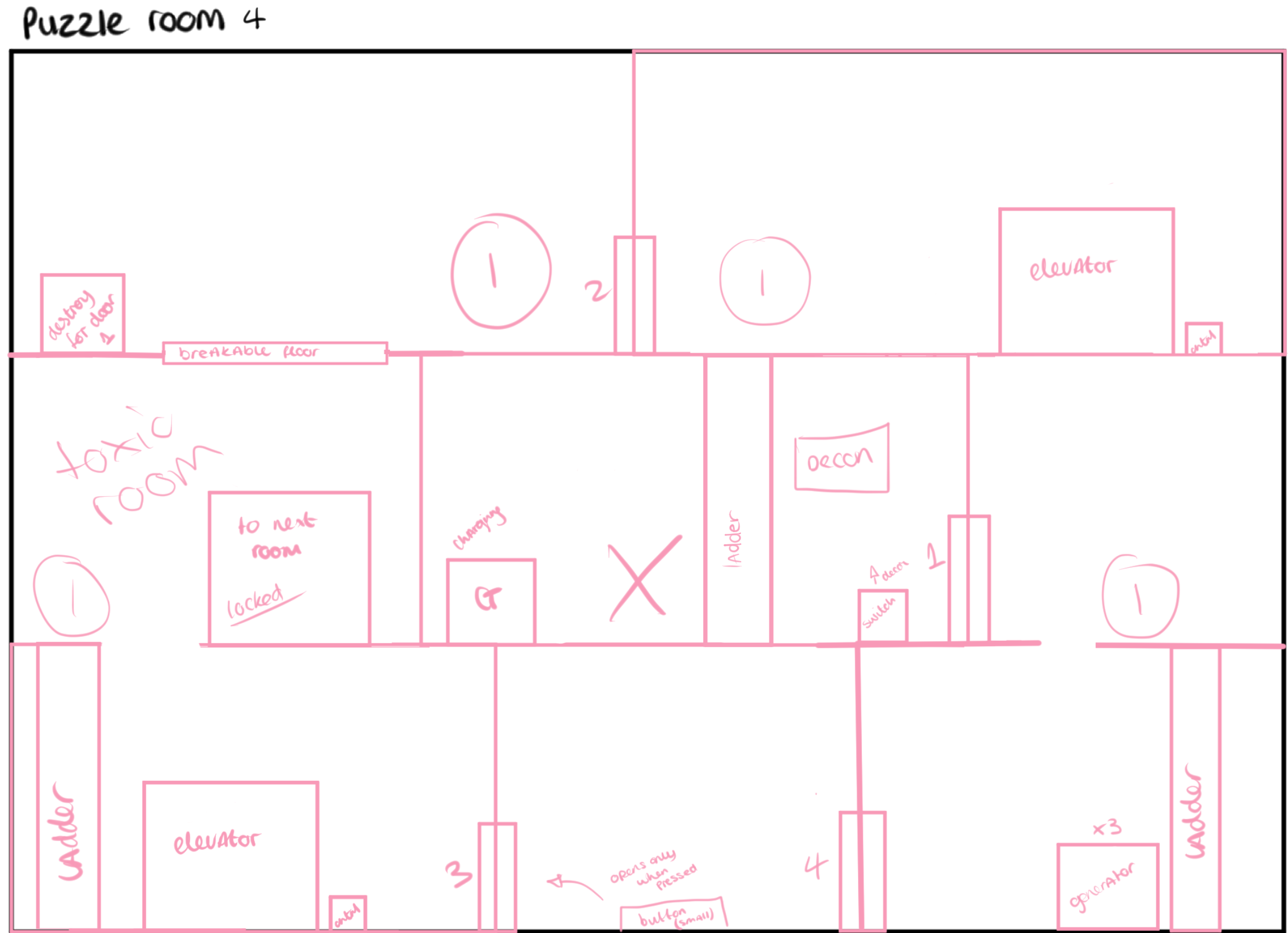
A draft sketch of a puzzle
With a team full of artists of various forms, one was always bound to have to take up the mantle of programming. For ease of time and in an effort to have as many hands on deck as possible if needed, the team decided to program the game in the software Clickteam Fusion 2.5. With a background in programming atmospheric horror games, our Lead Programmer had to learn fast when it came to programming puzzles; adapting their code and having to ensure that each puzzle could only be completed through a correct succession of actions. Though tricky, they have exceeded their expectations and, along with the Lead Designer have managed to bring some unique puzzles to life.

An example of our coding
When it came to the visuals of our game and to fit within the time constraints, though the team wished they could make the game in a comic book style, we settled on pixel art instead. This did mean however, that our Lead Artist would be working in an art style they had yet to explore. Known for their non-traditional, cell-shaded comic art style, our artist threw themselves into learning pixel art and even surprised themselves with how quickly they were able to pick it up. Practice makes perfect, which is why every piece of visual art in our game has been created from scratch by our artist. In a similar vein, all animations within the game were meticulously created by our Lead Animator who also showed great improvements in their skill as the project progressed. Going from slightly jittery in initial drafts to fluid and smooth movements in final versions. Whether that be for the player character, NPC’s or environmental objects and hazards. Enhancing the players overall experience to a higher level.

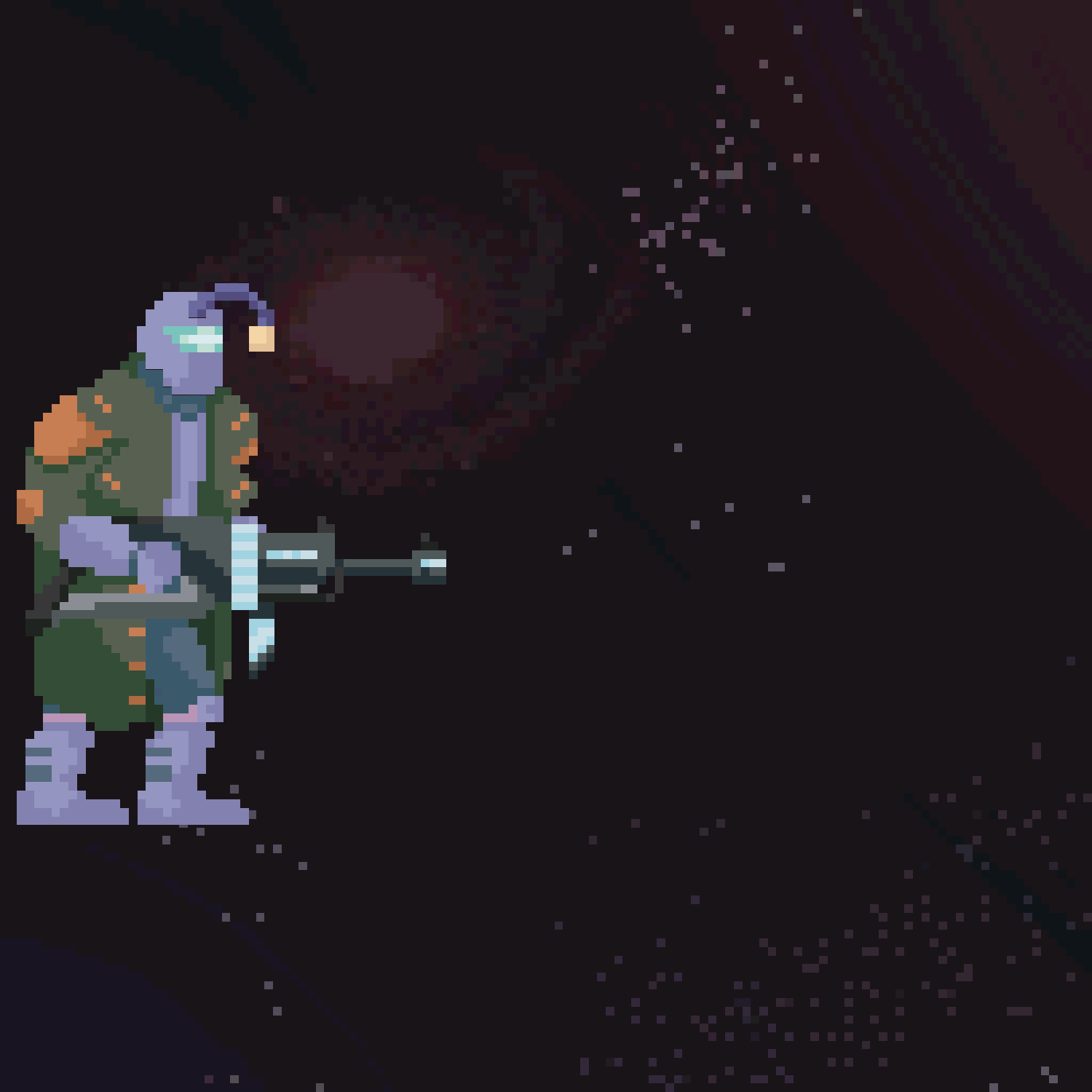
Final pixel art of planet Niveous & Animation of G.C.O.S Guard
Narratively, the game had to go through some major changes. To that end, our Narrative Lead, also having a background in writing horror and comedies, formulated and presented three new game concepts to the team. From the start, the team had decided we wanted to head down a sci-fi route which was also a genre that not the whole team was familiar with. As such, more research was done. In the end, it was decided that a blend of two of the presented game concepts would be the most interesting, and thus the story of BS-23, the former scientist and now convicted criminal was formed, as were the planets they would venture to and their inhabitants. Implementing this into a puzzle game effectively was fairly limiting, though we made it work by telling the story through player actions, dialogue and optional collectables.

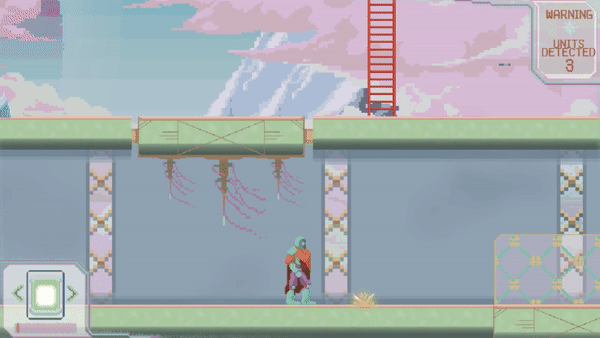
Dialogue & Collectable examples
Our First External Playtest
Though the team had been internally playtesting as we were creating the game, it came to a point where those that had set the challenge wanted to see our progress. During Week 4, those that had organised the event gave what was, at the time, the current build of the game a playtest and provided some great feedback. Mainly that our puzzles were well thought out and comprehensive, but the player would need more guidance as to what to do or where to go. From this feedback, we made sure to have each crucial part of the puzzle connected by environmental indicators such as wires. As well as introducing infographics in our tutorial to explain to players exactly what each cybernetic unit in the game does. This extra aid of information was well received once implemented and glad of our progress and positive feedback, we pushed on.

Infographic of the Infantry Unit
The Second External Playtest
Once Week 8 rolled around, everyone partaking in the challenge was able to showcase their latest build of their games to the others partaking, and get some critical but much needed feedback in case any changes had to be made to our games in the final week.
We were lucky enough to have multiple people want to come and playtest our game for us, and over the span of 3 hours provided us with more great feedback. The main take away from this playtest was that there were still a handful of ‘quality of life’ changes that needed to be implemented. This included, but was not limited to, having a ‘recall’ option for the beacon, as many players were finding running back and forth in puzzles to retrieve it tedious. Though that was initially part of the design of the puzzles and was supposed to contribute to causing ‘fail-states’ within our game, we felt it was best to introduce the recall mechanic. Even though it makes the puzzles slightly easier, we wanted to create a more enjoyable experience for our players.
![]()
An example of the Beacon Recall mechanic
All in all, creating a puzzle game from start to finish in only 60 days with little prior experience was a daunting task, but I couldn’t be more proud of our team and what we have been able to achieve in such a short amount of time. We greatly hope that you will enjoy saving the galaxy with BS-23 and are ready to face the moral dilemmas that lie ahead.
Kerri Squires - Producer & Narrative Lead at NDLSS Studios
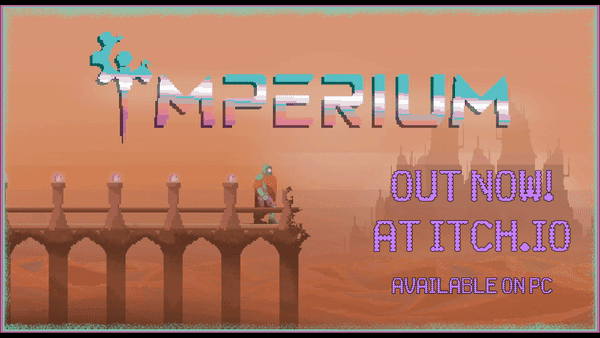
------------------------------------------------------------------------
Our Team
We are a team of avid Game Design Students who aim to make narrative driven games paired with eye-catching visuals that will stick with you even after the credits have rolled.
Imperium is our first collective venture into the realm of Game Design and Development, having been tasked with making a gaming experience from start to finish in just 60 days.

Producer/ Narrative Lead/ Marketing - Kerri Squires
Lead Designer/ Puzzle Designer - Chloe McCarthy
Lead Programmer/ VFX - Seamus Moore
Lead Artist/ Concept & UI Artist/ Marketing - Niki C. Swinfen-Wilkes
Lead Animator/ Marketing - Durrah Razfan
With special thanks to:
Composer - Alvise Carraro
Produced by
Many thanks to Octopus 8 Studios for giving us the chance to put our design skills and special talents to the test over these past 60 days. If you want to check out the other games produced by Octopus 8 Studios during this event then click the logo above.
Follow our socials
Instagram: Instagram.com
Twitter: Twitter.com
Files
Get Imperium
Imperium
You’re in a better place now.
| Status | Released |
| Authors | Octopus 8 Studios, gattonero, NikiCSW, KayDeeEss, Wimble, seamusmoore2001, Alvise Carraro |
| Genre | Puzzle, Adventure, Platformer |
| Tags | 2D, Lo-fi, Narrative, Pixel Art, Sci-fi, Side Scroller |
